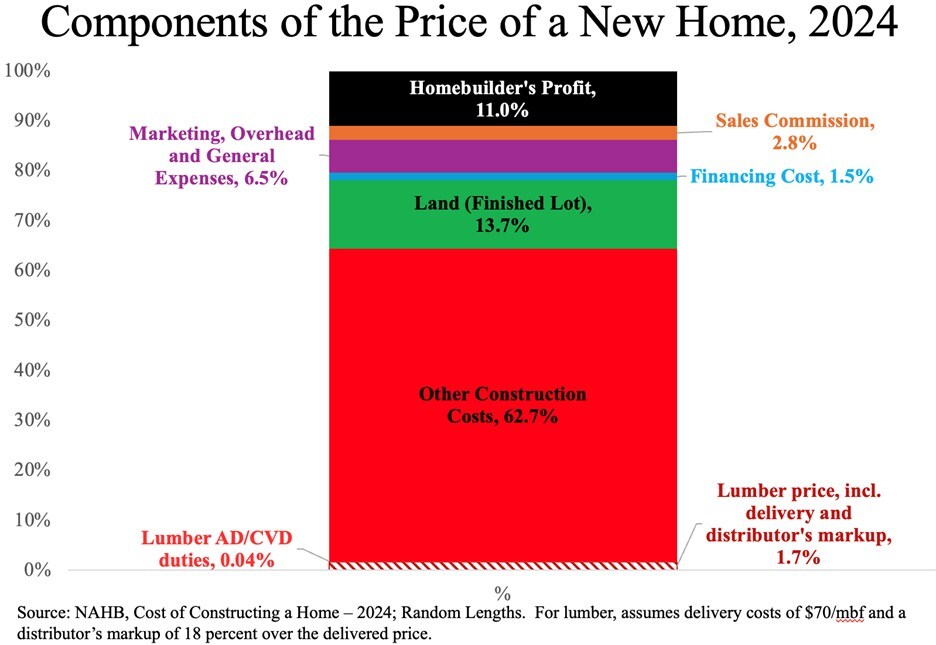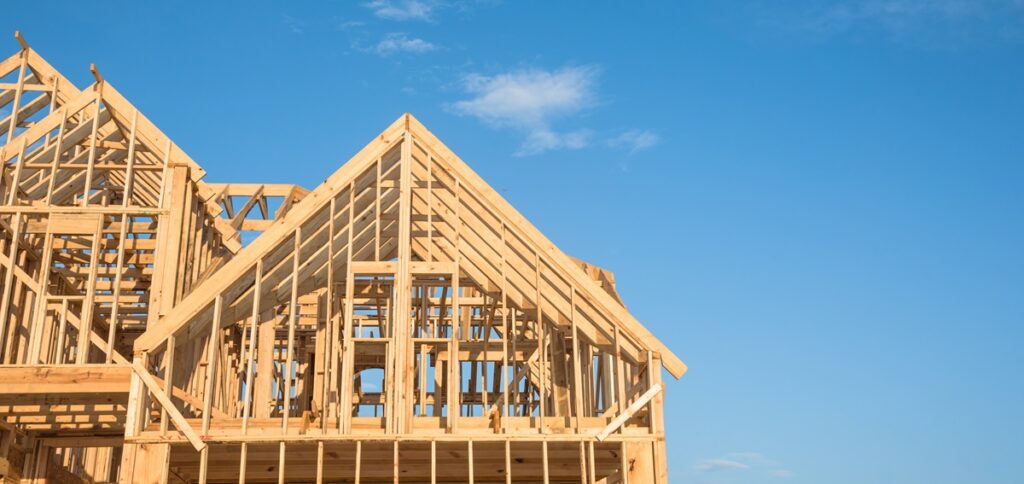The rumor mill has it that the cost of lumber is driving up housing affordability. As happens many times, the rumor mill is wrong.
A recent study by the U.S. Lumber Coalition found that since 2016, U.S. lumber mills have added eight billion board feet of production capacity and have produced 30 billion additional board feet of softwood lumber, more than offsetting the decline in unfairly traded Canadian imports.
In addition, the United States supplies up to 95% of its own lumber needs today, due to increased U.S. capacity through the enforcement of the U.S. trade laws. Lumber makes up only 1.7% of the price of a new home, including delivery and distributor’s markup. Duties on Canadian lumber make up just 0.04% of the price of a new home.
That all boils down to one simple statement: lumber cost has minimal impact on housing affordability.

That the cost of lumber is a very small component of the price of a new home is borne out in data from the National Association of Home Builders (NAHB) and Fastmarkets Random Lengths. Consequently, duties on a share of that lumber imported from Canada resulting from the enforcement of U.S. trade laws against Canada’s egregious unfair trade practices in softwood lumber have a near-zero impact on the price of a new home.
It’s more productive to focus on the growth of U.S. lumber manufacturing capacity, aided by the strong enforcement of the U.S. trade laws. The softwood lumber trade cases to offset Canadian lumber subsidies and unfair trade have resulted in more U.S. lumber being produced by U.S. workers to build American homes.
Since the filing of the trade cases by the U.S. industry in 2016, domestic sawmill investment and capacity expansion has been robust. U.S. mills have added eight billion board feet of production capacity and produced 30 billion additional board feet of softwood lumber during this period. That amounts to an average of 3.7 billion board feet a year of added production by U.S. producers. This more than offsets the decline in unfairly traded Canadian imports—it’s enough lumber to build two million single-family homes.
This strengthening of domestic supply lines to build American homes with American lumber would not have happened without strong enforcement of the U.S. trade laws, which work to level the playing field against subsidized and dumped imports.
“The U.S. trade laws have allowed the domestic industry to dramatically increase its production capacity since 2016,” stated Andrew Miller, Chairman and Owner of Stimson Lumber. He added that “the trajectory of the increased U.S. capacity through the enforcement of the U.S. trade laws means that today the United States can supply up to 95% of its own lumber needs.”
“Since Canada relies almost exclusively on the U.S. market to unload its excess lumber production at any cost—for example, through massive dumping—this new U.S. self-reliance for its softwood lumber needs is causing panic within the Canadian lumber export industry,” stated Zoltan van Heyningen, U.S. Lumber Coalition Executive Director. “This is why Canada and U.S.-based organizations parroting a ‘Canada First’ agenda are engaging in an aggressive campaign, widely pushing misinformation about the impact of U.S. trade law enforcement on U.S. housing costs.”
And while housing inventory is on the rise, members of the NAHB recently appeared before Congress to discuss federal permitting inefficiencies and how they delay housing projects, raise construction costs, and further exacerbate the nation’s housing affordability crisis. Testifying before the Senate Environment and Public Works Committee, NAHB Chairman Carl Harris, a custom home builder from Wichita, Kansas, told lawmakers that “most land developers have been forced to step away from particular parcels of land due to the uncertainty of being able to obtain the necessary permits.”
According to a 2021 NAHB study, regulatory costs at the federal, state, and local levels account for 24% of the final price of a new single-family home built for sale. Achieving predictability and certainty in the federal permitting process will help reduce the overall cost of construction, which will help increase the nation’s housing supply.
“Enacting common sense regulatory reforms that will make compliance more efficient and less onerous will help home builders to better safeguard the environment and expand the availability of attainable, affordable housing for all Americans,” added Harris.
Click here for more on the U.S. Lumber Coalition’s report on the impact of lumber on America’s home builders.






